 The sign that is no more.
The sign that is no more.
As we approached the tiny hilltop village of Montsegur-sur-Lauzon in northern Provence, my mouth was already watering in anticipation of the bread at the one and only boulangerie (bakery) there. I'd been looking forward to this for months, ever since last November, when we'd made one last stopover to load up on bread to sustain us for the long drive back home and a couple of days beyond.
I've written about my love for this boulangerie before. The bread there was the best I've ever had - bursting with flavor and character. Even when the loaves turned a bit stale after a couple of days, they were still so good. I was convinced that if the baker, Monsieur Metaud, was in Paris, he'd be world famous.
It was a Sunday, and there was a small queue of people waiting for their bread in the tiny store. Neither of the two people behind the counter, a young man and a middle aged woman, were Madame or Monsieur Metaud, but that didn't concern us - they had other people selling bread there before, especially on weekends. But as we shuffled closer to the front of the line, something seemed a bit off. The collection of exotic teas that used to line the wall shelves were gone. The pretty display of confections was quite pared down.
Filed under:
bread essays food travel provence france
Swiss people love cutely formed bread, just as much if not more than Japanese people. Behold, this masterpiece of adorable yet modern design, in the form of an Easter Bunny bread. (click on the image from the web page to see it larger).
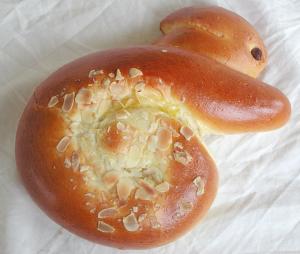
The almond slices scattered on top were a bit misleading. I was rather anticipating some kind of sugar-almondy filling, but it was just slightly sweetened white bread all the way through. Perhaps the cuteness is enough sugariness for one small bread.
For more Swiss Easter Bunny goodness, read about the chocolate Easter Bunny making class I took last year.
Filed under:
bread swiss easter holidays
 Yakitate!! Japan is a popular manga series. So popular in fact that it's one of the few manga that's available (legitimately) in English. There was also an anime series, which so far is only (legally) available in Japan. It sort of belongs to a genre of manga called Gourmet (gurume) Manga, manga whose main theme is food-related. The Wikipedia Japan page for Gourmet Manga lists more than 100 titles in this genre, though as far as I know only Yakitate!! is available in English at the moment. (I'll be talking about other gourmet manga eventually.)
Yakitate!! Japan is a popular manga series. So popular in fact that it's one of the few manga that's available (legitimately) in English. There was also an anime series, which so far is only (legally) available in Japan. It sort of belongs to a genre of manga called Gourmet (gurume) Manga, manga whose main theme is food-related. The Wikipedia Japan page for Gourmet Manga lists more than 100 titles in this genre, though as far as I know only Yakitate!! is available in English at the moment. (I'll be talking about other gourmet manga eventually.)
The Yakitate part of the title means "freshly baked". The Japan part is a pun of sorts: pan is the Japanese word for bread (the word was imported from Portuguese most likely), and the goal of the main character is to find the ultimate JaPan, or Japanese bread. The title sequence of the anime says that "There's furansu pan (French bread), igirisu pan (English bread), doitsu pan (German bread) but no bread to represent Japan". The story unfolds in the form of several big Iron Chef style baking competitions, where the main character Kazuma Azuma and others vie with each other for fame and glory. A running gag is that the bread creations are so delicious that they make the eaters, especially main judge Kuroyanagi, have extreme reactions like dying and going to heaven, or (from another judge) sprouting a live peacock out of his head.
Filed under:
books and media bread japanese manga
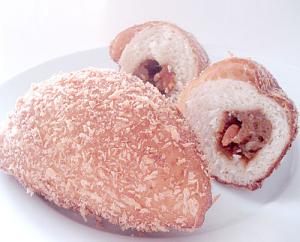
There's a whole category of breads in Japan called okazu pan. Okazu are the savory dishes that you eat with your bowl of rice at a typical meal, and okazu pan are little breads with savory fillings.
Since curry flavored anything is a hit in Japan, curry bread or kare- pan is one of the most popular okazu pan varieties. It's a bun made of slightly sweet dough, filled with a spoonful of curry, breaded and deep fried. I am not sure how curry bread originated, but I am guessing it was inspired by Russian piroshki (piroshiki is also a popular okazu pan, though in the Japanese version it often contains very non-Russian fillings like harusame, thin bean noodles). Curry bread is sold at bakeries and convenience stores throughout Japan.
Making curry bread is a bit tricky since it's deep-fried. It's easy to make an oily, soggy lump if you fry it too long or at too low a temperature, but if you don't fry it long enough the center part where the dough meets the filling may be raw. My solution for this is to fry it until it's puffed and crisped, then to finish it in the oven. The other trick is to roll out the dough as thinly as you can manage without making it so thin that the curry is going to burst through.
You also have to be careful about the consistency of the curry filling. It's most convenient to start out with some leftover curry, but it has to be reduced down to a very thick, paste-like consistency, otherwise it will run over the dough and make the dough hard to seal. If the dough is not sealed properly, the bun will burst in the oil, which ends up to be quite a mess (oil seeps in, filling seeps out).
All in all, I am not sure I would bother to make curry bread at all if I lived near a Japanese bakery, but I do on occasion get a craving for this very down to earth snack. Try it if you're up for a bit of a challenge. This recipe is adapted from one in an out-of-print Japanese bread book.
Filed under:
bread japanese snack baking curry
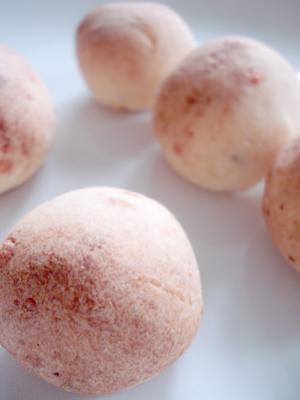
This may not be well known outside of the two respective countries, but there are pretty strong historical and cultural ties between Japan and Brazil. There was a wave of emigration from Japan to Brazil in the early part of the 20th century and later on around the '50s and '60s. And in the last 30 years, many Brazilians of Japanese descent (people of Japanese descent born in another country are called nikkei-jin) have in turn emigrated to Japan to fill labor shortages. Perhaps because of this, a few years ago one of the staples of the Brazilian diet, pao de queijo, little cheese breads, became very popular. While their popularity may have descended a bit from their peaks (Japan tends to be periodically swept up by big food or fashion trends, which after a time get dropped without warning when people move onto the next thing, but that's another story), they are still made by bakers throughout Japan.
I think that pao de queijo appeals so much to the Japanese palate because they are small, round and cute, and have a distinctive gooey-sticky-glutinous kind of texture inside. This texture is called mochi mochi, after mochi, the very gooey-glutinous rice cakes.
Filed under:
bread cheese japanese potatoes vegetarian quickbread brazilian fusion gluten-free
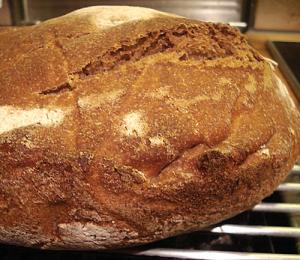 I've adapted the No Knead Bread method for making this bread as described here, for a bread that originally requires at least 20 minutes of kneading. It turns out a quite light, crispy-crust, delicious loaf.
I've adapted the No Knead Bread method for making this bread as described here, for a bread that originally requires at least 20 minutes of kneading. It turns out a quite light, crispy-crust, delicious loaf.
Filed under:
bread baking desem whole wheat
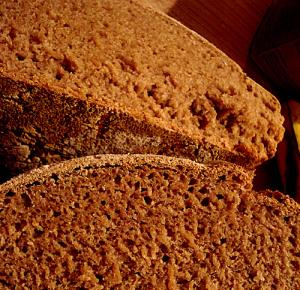 Like probably everyone, or at least every food blogger, in the world with an oven and a fondness for baking bread, I tried the No Knead Bread as written up in the New York Times in November. Authored by Mark Bittman via Jim Lahey of Sullivan Street Bakery in New York, this almost perplexingly easy method of mixing up a bread dough that has that distinctive 'artisanal bread' crumb and thin, crackly crust caused a sensation in the teapot that is the world of food blogging.
Like probably everyone, or at least every food blogger, in the world with an oven and a fondness for baking bread, I tried the No Knead Bread as written up in the New York Times in November. Authored by Mark Bittman via Jim Lahey of Sullivan Street Bakery in New York, this almost perplexingly easy method of mixing up a bread dough that has that distinctive 'artisanal bread' crumb and thin, crackly crust caused a sensation in the teapot that is the world of food blogging.
As just about everyone says, it does produce a very good bread. And yet...for me it lacked that something extra special. This has a lot to do with the fact that in this country good bread is quite easy to get. Even the bread sold at the major supermarkets is not bad at all. The rather shiny, slightly gummy, open-grained texture of the No Knead Bread reminded me of pain paillase, a very popular twisted loaf bread that's widely sold in Swiss bakeries. The thing is though, pain paillase, being a sourdough bread and baked into a fat baguette shape, is tastier than the all-white flour No Knead Bread. So, I haven't baked any basic No Knead since the first couple of loaves. Besides. I'm trying to cut out white flour at the moment.
Filed under:
bread baking desem whole wheat
Now that the weather is getting cooler, at least in these parts, there's nothing as appealing the smell of fresh baking filling the house. I don't think I have posted a simple baking recipe in a long time, so here's one that has become a favorite because it's so delicious and versatile. Here you see them in their cookie incarnation. (I used vegetable-shaped cookie cutters.)
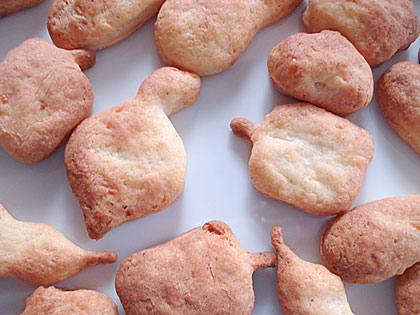
Up close, for scale:
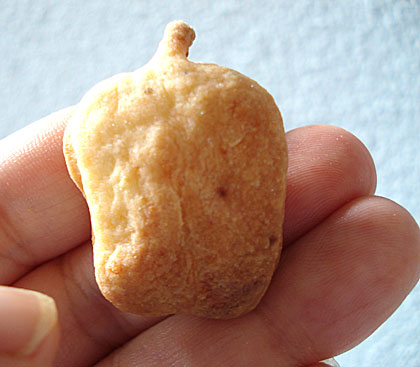
And here is the big scone incarnation:
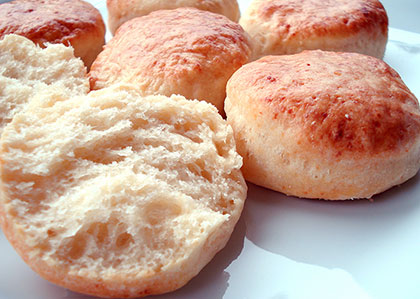
The recipe is based on one for English scones, but it's savory rather than sweet. Inspiration also came in part from Hungarian cheesy scones called pogasca, which I first had on a short trip to Budapest some years ago, and can't forget since. Depending on how big you make them, they can be fluffy-in-the-middle scones, or crispy yet soft little cookies, or biscuits for Brits. (Confusing the matter even further is of course that scones are very much like American biscuits.) In any case they are really easy to make, especially if you have a food processor.
These savory scones/biscuits/cookies are made with olive oil, which imparts the unique fruity-peppery taste of the oil, and also makes them theoretically a tiny bit healthier than using vegetable shortening or butter. You can use butter of course if you prefer that taste. (I hardly ever use vegetable shortening in my cooking, so I can't speak for it. I use lard sometimes, but that's another story.)
I have used three cheeses for this - Gruyère, feta and Parmigiano Reggiano (Parmesan) (plus cottage cheese), but you can use any bits of leftover hard or semi-soft cheese as long as it all adds up to about 1 cup in total.
If you make the scones very small and bake them until they are quite crunchy on the outside, they make perfect nibbles for a wine tasting. Make them larger and they are great fluffy biscuits/scones to have with a hearty soup or stew. You can also turn the large versions into very rich small sandwiches with a little roast ham or something in the middle.
These freeze beautifully and can be heated up in the oven, wrapped in foil, at 300°F/150°C for about 5 minutes for the little ones, 10-15 minutes for the big ones. The little ones can also be kept in an airtight cookie tin for about a week, so they are great to make ahead for a party.
Filed under:
bread party food quickbread scones biscuits cookies savory
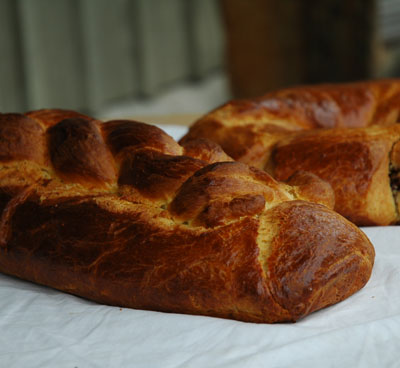
Brioche bread is so delicate, light and buttery that is just one tiny step removed from being a pastry. Plain brioche bread is delicious on its own, toasted or with loads of jam. But brioche dough also makes an ideal casing for all kinds of fillings both savory and sweet. It's my favorite dough for making anything en croute, as well as for sweet filled breads that are so nice for a brunch party.
Filed under:
bread chocolate dessert party food baking favorites
Posted by Max
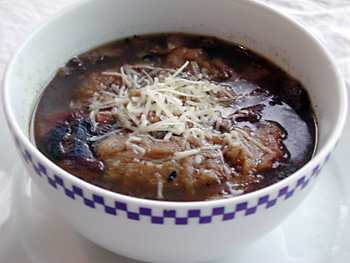
In the small household I grew up, there was always an issue with bread. Either it was gone because it was fresh and very good, or it was not that fresh anymore, and stayed until stale. To clear up this stale bread, my mother made a simple soup out of it. This simple recipe fits very well in Is My Blog Burning, edition 25, hosted by Derrick Schneider's An Obsession with Food.
Filed under:
bread soup imbb leftovers
Pages